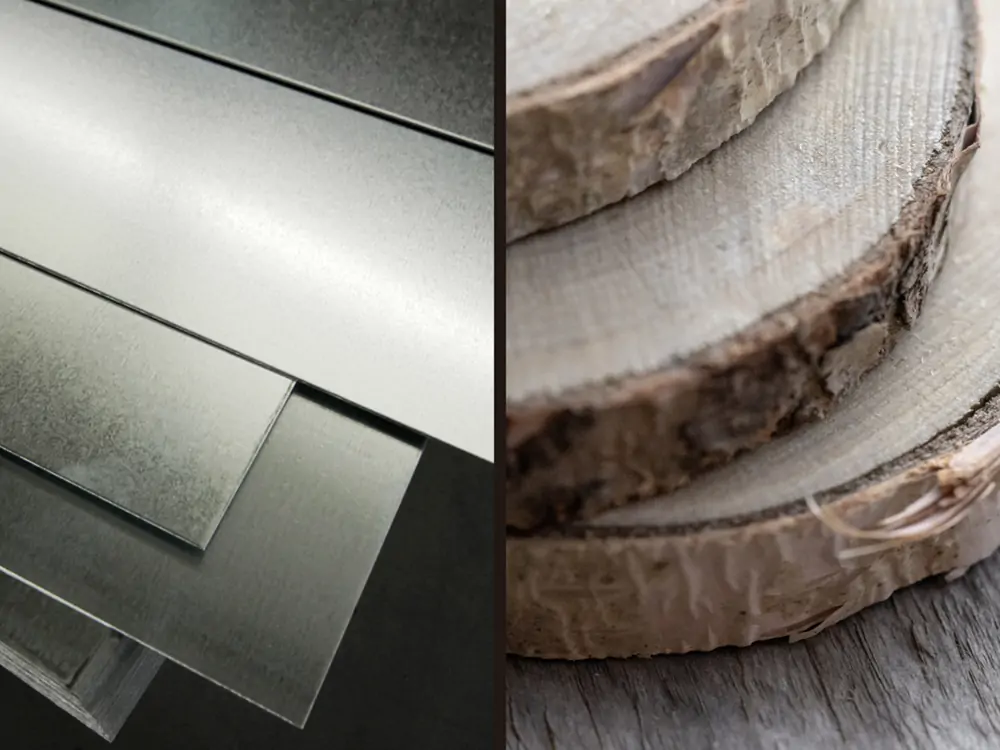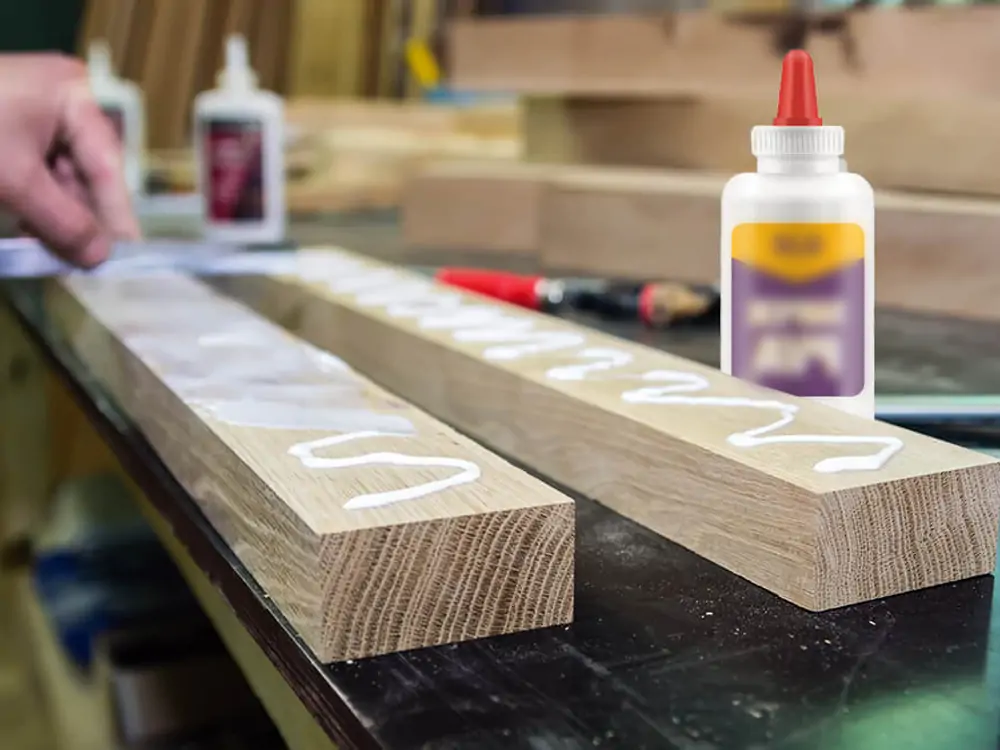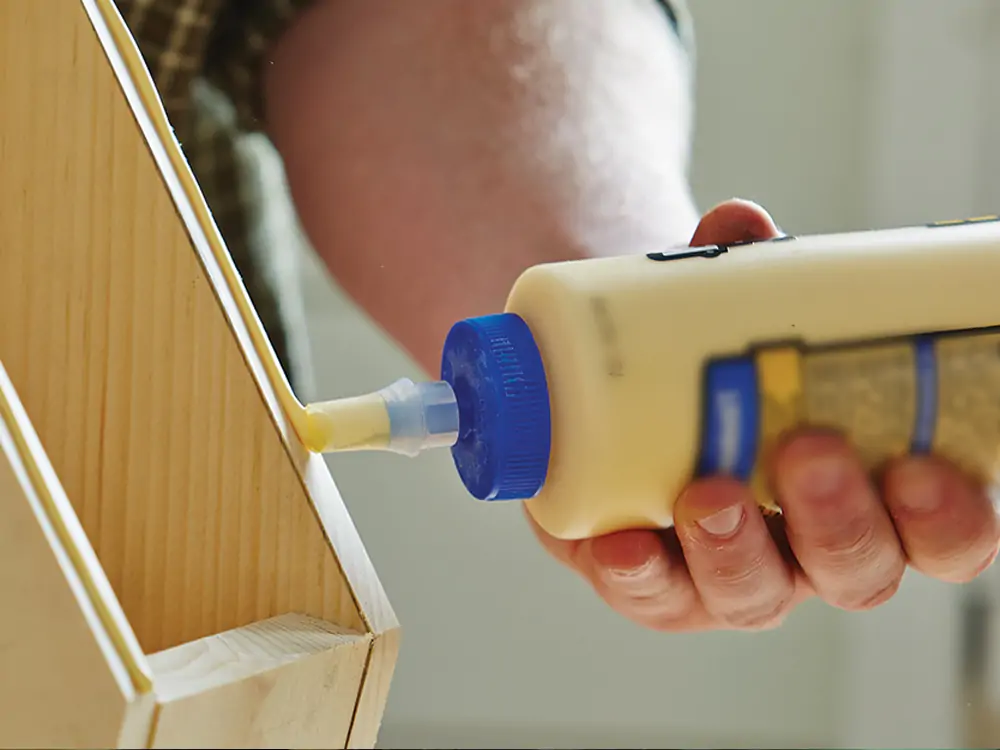Gluing metal to wood is tricky because both materials have very different properties. However, you can achieve a strong, long-lasting bond. Just choose the right adhesive and follow proper techniques. This article will guide you. It will help you, from understanding the materials to selecting the right glue for your project. Whether you’re a beginner or just need a quick reference, this guide will help you get it right.

Understanding the Differences Between Metal and Wood
Before choosing the glue, it’s important to know that gluing metal to wood is harder than gluing similar materials.
Metal
Metal is smooth and non-porous, which means most glues won’t easily stick to it. To bond metal properly, you often need to roughen or treat its surface.
Wood
Wood, conversely, is porous and can absorb glue, which helps it bond well with many adhesives. Yet, wood expands and contracts with temperature and humidity. So, you need an adhesive that can handle these changes.
Due to these differences, it’s vital to choose the right glue. It must create a strong, lasting bond that won’t weaken over time.
Key Factors to Consider When Choosing Glue for Metal and Wood
Strength:
Consider how much weight or stress the bond needs to support. A heavy-duty bond needs a stronger adhesive, like epoxy. Lighter jobs may work with a less strong glue.
Flexibility:
Will the materials be exposed to changes in temperature or humidity? If so, you’ll need a glue that stays flexible after curing. It must allow for wood’s natural expansion and contraction.
Environmental Conditions:
If your project will be exposed to moisture, outdoor elements, or extreme temperatures, the glue needs to be waterproof and weather-resistant.
Surface Preparation:
For the best results, the surfaces need to be clean, smooth, and dry. In some cases, you may need to roughen the metal surface with sandpaper to give the glue something to grip.

Types of Glue Suitable for Gluing Metal to Wood
1. Epoxy Adhesive
Epoxy is one of the strongest adhesives available and is ideal for heavy-duty projects that need a permanent bond.
- Best for: Strong, durable bonds where the materials will bear weight or stress.
- Advantages: Epoxy creates a waterproof and heat-resistant bond, perfect for long-term applications.
- Disadvantages: It requires mixing two components (resin and hardener) and can be messy. It also takes time to cure, typically around 24 hours for full strength.
2. Polyurethane Glue
Polyurethane Glue works well in environments where flexibility and waterproofing are needed.
- Best for: Outdoor projects or applications that need flexibility and can handle temperature changes.
- Advantages: Expands to fill gaps and is waterproof, ideal for outdoor use.
- Disadvantages: Requires moisture to cure, which can make it tricky to apply, and cleanup is difficult as it expands while drying.
3. Construction Adhesive
Construction Adhesive is ideal for large surfaces where strength is key.
- Best for: Large-scale projects requiring strong, long-lasting bonds between metal and wood.
- Advantages: Easy to apply and very durable, perfect for bonding large surfaces.
- Disadvantages: Takes longer to cure and may not be suitable for precise applications.
4. Cyanoacrylate (Super Glue)
Super Glue is best for light-duty, quick fixes due to its fast bonding time.
- Best for: Quick repairs and small projects where a fast bond is required.
- Advantages: Bonds instantly, making it perfect for small projects that don’t need much strength.
- Disadvantages: The bond is brittle and unsuitable for heavy-duty applications or projects with frequent movement.
5. Spray Adhesive (Recommended: Sprayidea Multipurpose Spray Adhesive)
Spray Adhesive is a convenient option for large-area bonding and easy application.
- Best for: Lightweight, large-area projects like attaching panels or decorative surfaces.
- Advantages: Easy to apply over large areas, dries quickly, and offers flexibility in use.
- Disadvantages: Not as strong as other adhesives like epoxy or construction adhesive, suitable only for medium-duty projects.
Product Recommendation:
For gluing metal to wood with a spray adhesive, we recommend Sprayidea Multipurpose Spray Adhesive. It’s designed for use on both metal and wood, making it a versatile and easy-to-use solution. It provides quick adhesion, dries clear, and works well for large surfaces like panels, upholstery, or crafts.
Step-by-Step Guide to Choosing the Right Glue
Assess Your Project:
Determine how much strength and flexibility the bond needs.
Will the materials be used indoors or outdoors?
Prepare the Surfaces:
Clean both the metal and wood surfaces thoroughly.
For metal, lightly sand the surface to create a rough texture that helps the glue adhere better.
Choose the Right Glue:
For small or light-duty projects: Super glue or spray adhesive like Sprayidea Multipurpose Spray Adhesive.
- For heavy-duty, permanent bonds: Epoxy adhesive.
- For flexible or outdoor projects: Polyurethane glue.
- For large surfaces: Construction adhesive or spray adhesive.

How to Apply Each Type of Glue
Epoxy Adhesive:
Mix the resin and hardener.
Apply evenly to both surfaces and clamp them together until the glue cures.
Polyurethane Glue:
Dampen one of the surfaces.
Apply the glue and press the surfaces together, holding them in place until the glue expands and cures.
Construction Adhesive:
Apply in a zigzag pattern over the surface.
Press the surfaces together firmly and use clamps if needed.
Super Glue:
Apply a small amount to one surface.
Press the surfaces together for a few seconds until the bond forms.
Spray Adhesive (e.g., Sprayidea):
Shake the can well.
Spray an even coat on both surfaces and wait for it to become tacky.
Press the surfaces together and apply pressure.
Tips for a Strong Bond
Clamping: Always clamp or apply weight to the glued surfaces to ensure proper bonding as the glue cures.
Curing Time: Be patient and allow the glue to cure fully before putting any stress on the bond.
Surface Prep: Properly preparing the surfaces is crucial for a strong, lasting bond.
Conclusion
Choosing the right glue for metal to wood depends on your project. Consider the needed strength, flexibility, and exposure conditions. Whether you need a heavy-duty solution like epoxy, a versatile product like polyurethane glue, or a convenient spray adhesive like Sprayidea Multipurpose Spray Adhesive, this guide should help you make an informed decision for a lasting bond.
Always remember: Proper surface preparation and patience during the curing process are key to achieving the best results.
Frequently Asked Questions
- Can I use regular wood glue for metal-to-wood bonding?No, regular wood glue is not suitable for bonding metal to wood. Wood glue is designed to work on porous surfaces like wood, and metal is non-porous, meaning the bond will be weak. It’s best to use adhesives that can bond both wood and metal, like epoxy, polyurethane glue, or construction adhesive.
- How do I remove excess glue or clean up?For most adhesives, it’s best to remove excess glue while it’s still wet using a clean cloth and an appropriate solvent. For example, acetone works well for epoxy and super glue, while warm soapy water can clean off polyurethane glue before it dries. Always check the manufacturer’s instructions for specific cleanup recommendations.
Common Mistakes to Avoid
- Using the wrong type of glue for the project: Always choose a glue that is specifically designed for bonding metal to wood. Regular wood glue won’t hold up, and you’ll need an adhesive that works well on non-porous materials like metal.
- Not preparing the surfaces properly: Failing to clean, sand, or treat the surfaces can lead to weak bonds. Always ensure both surfaces are free of dirt, grease, and dust before applying glue. Lightly sanding the metal can also improve adhesion.
